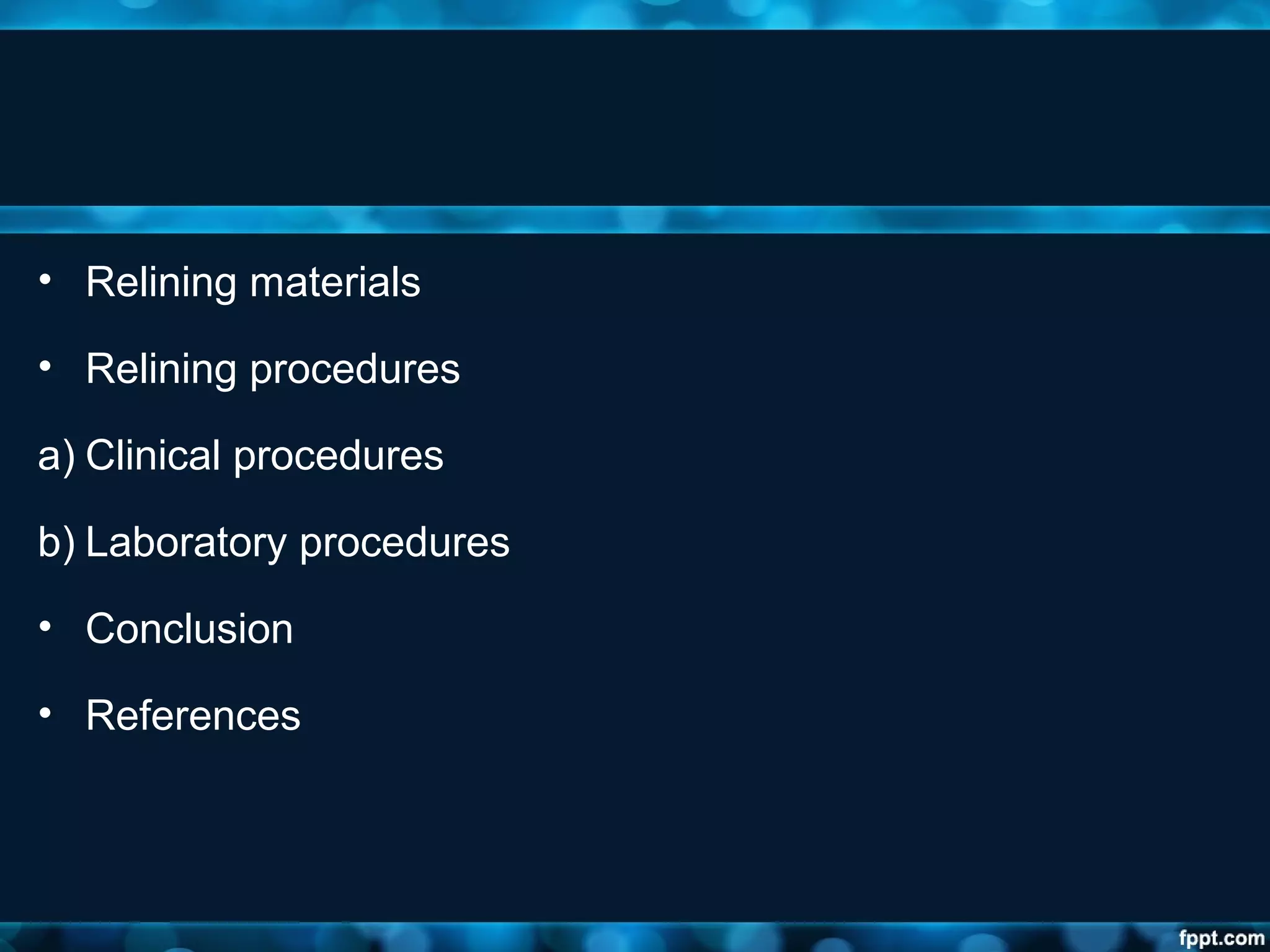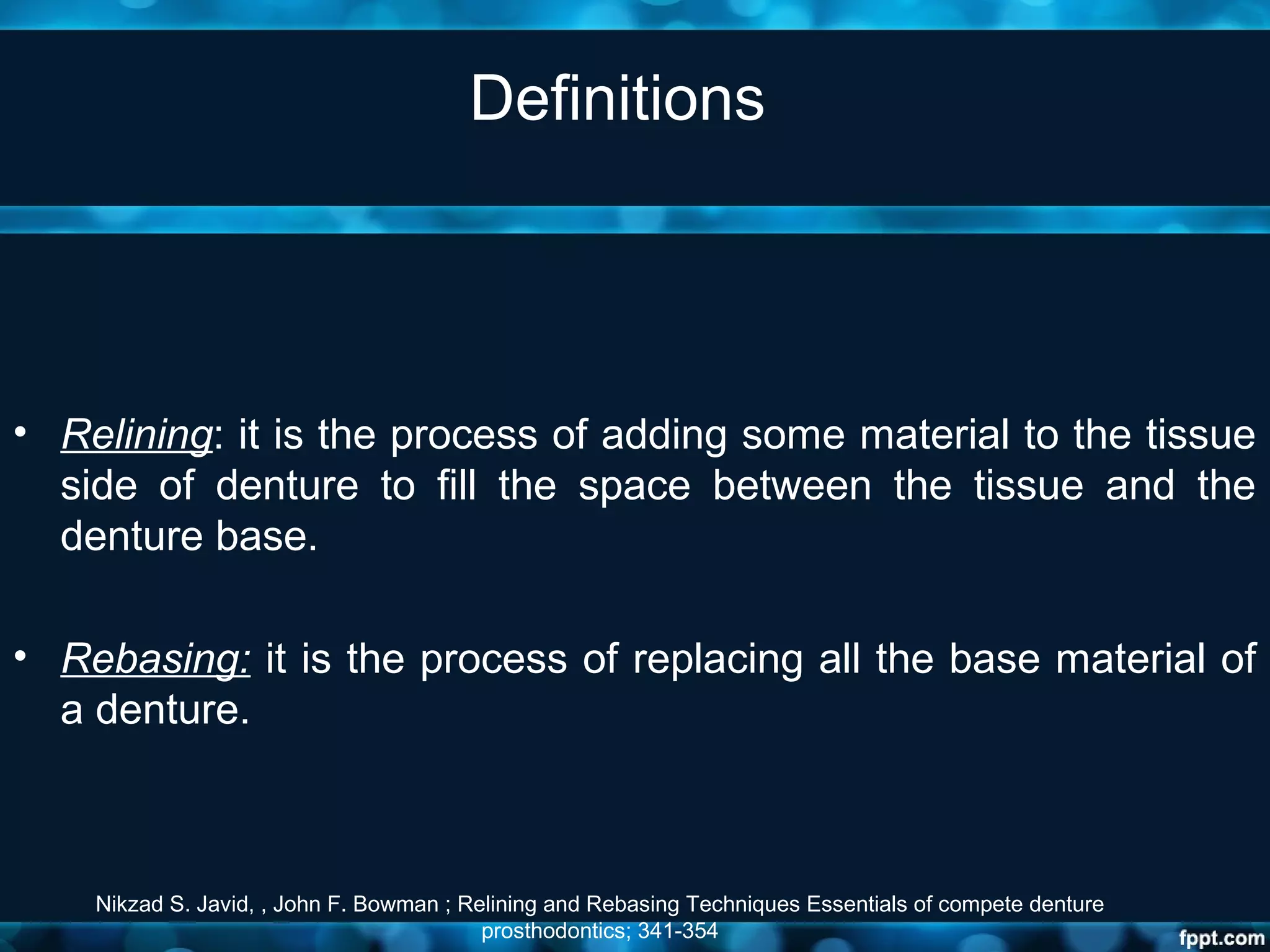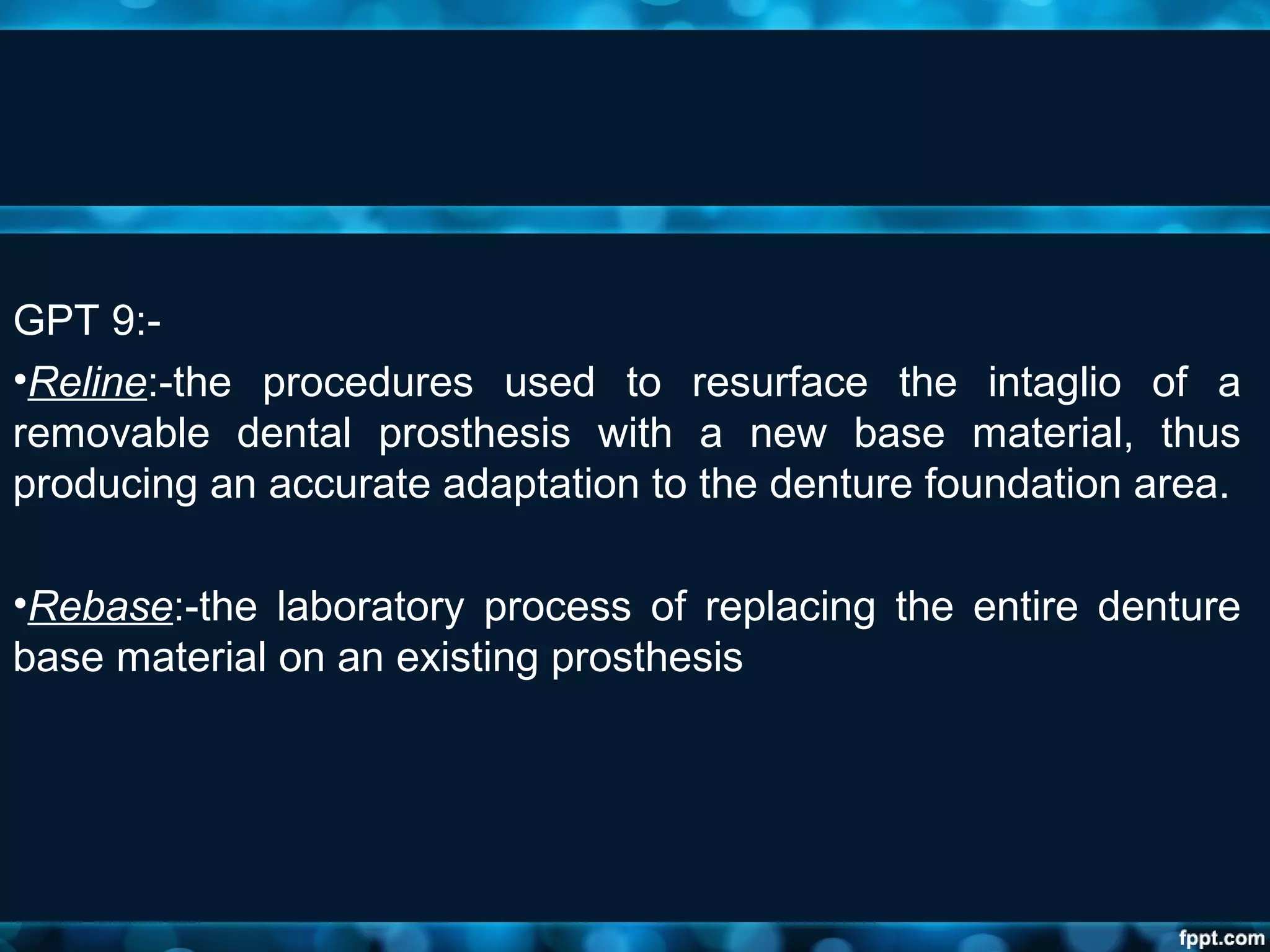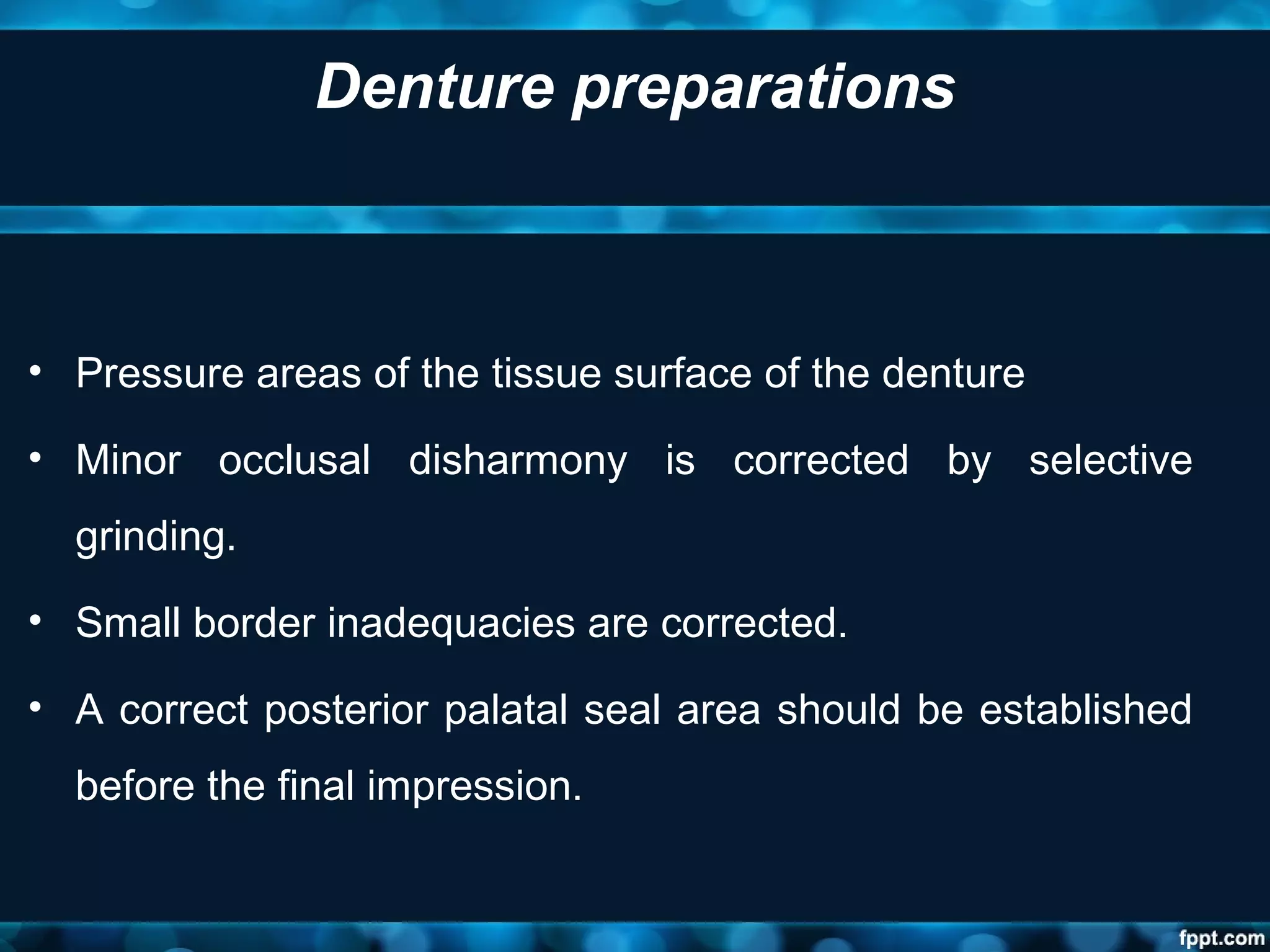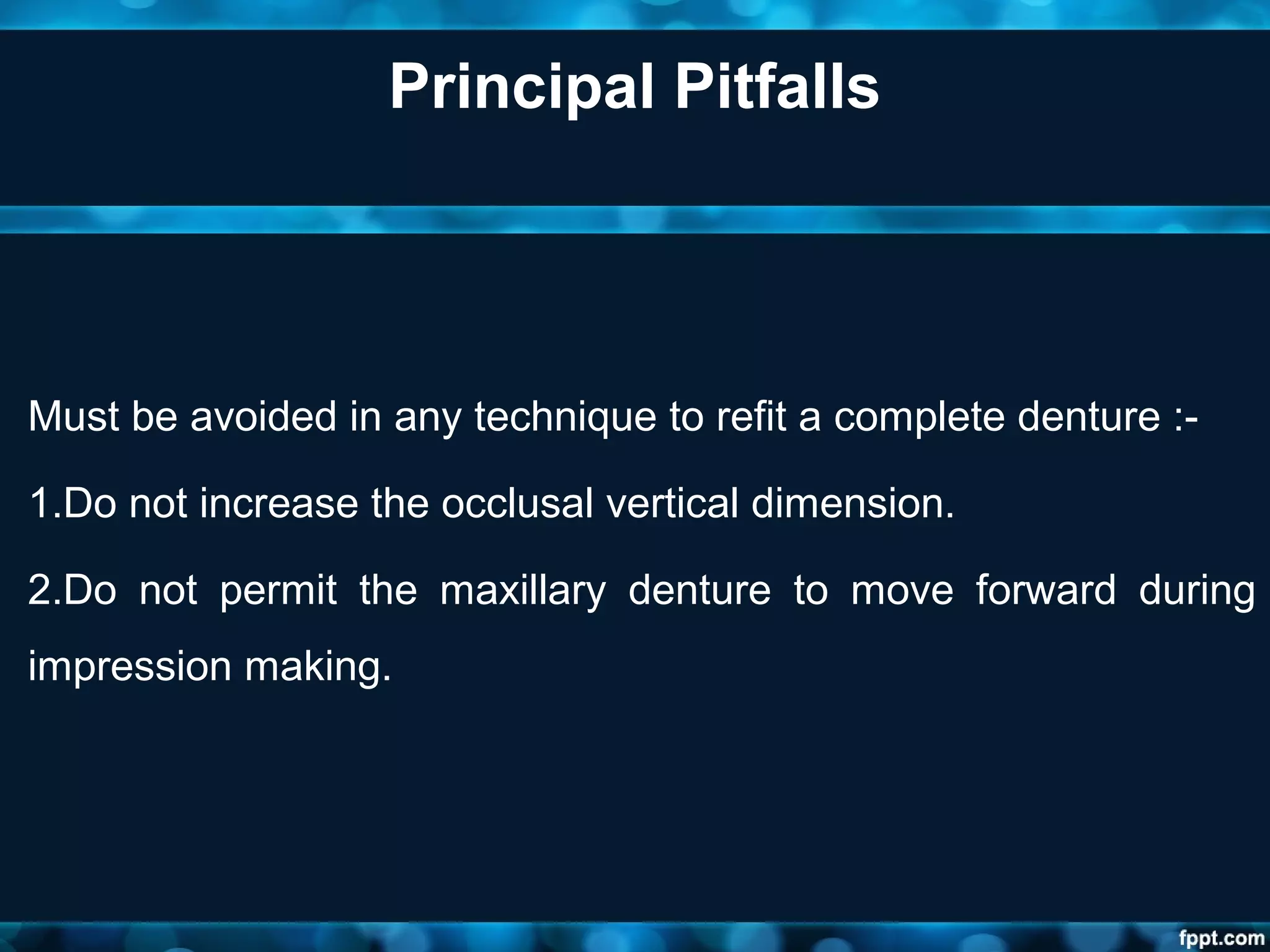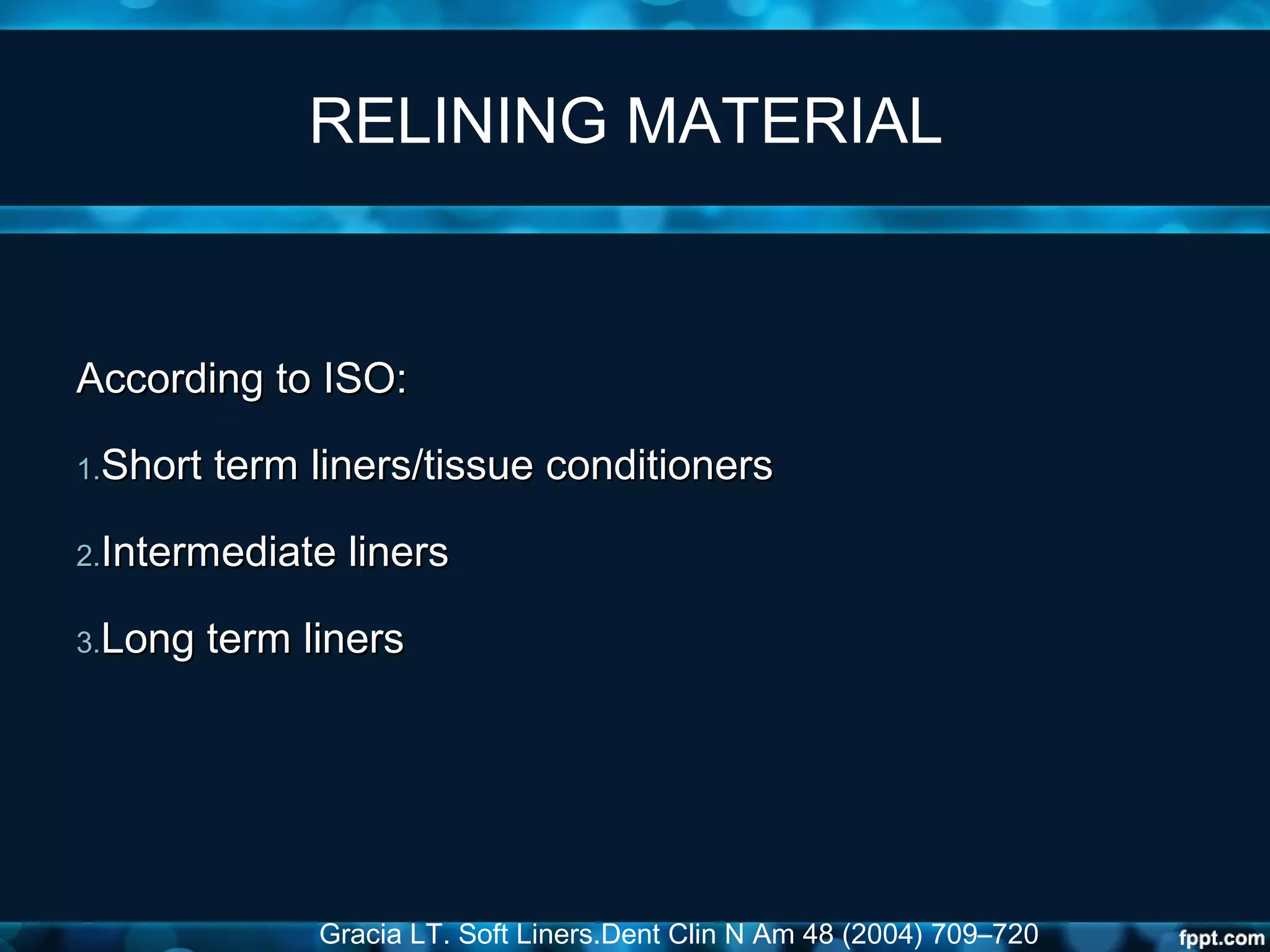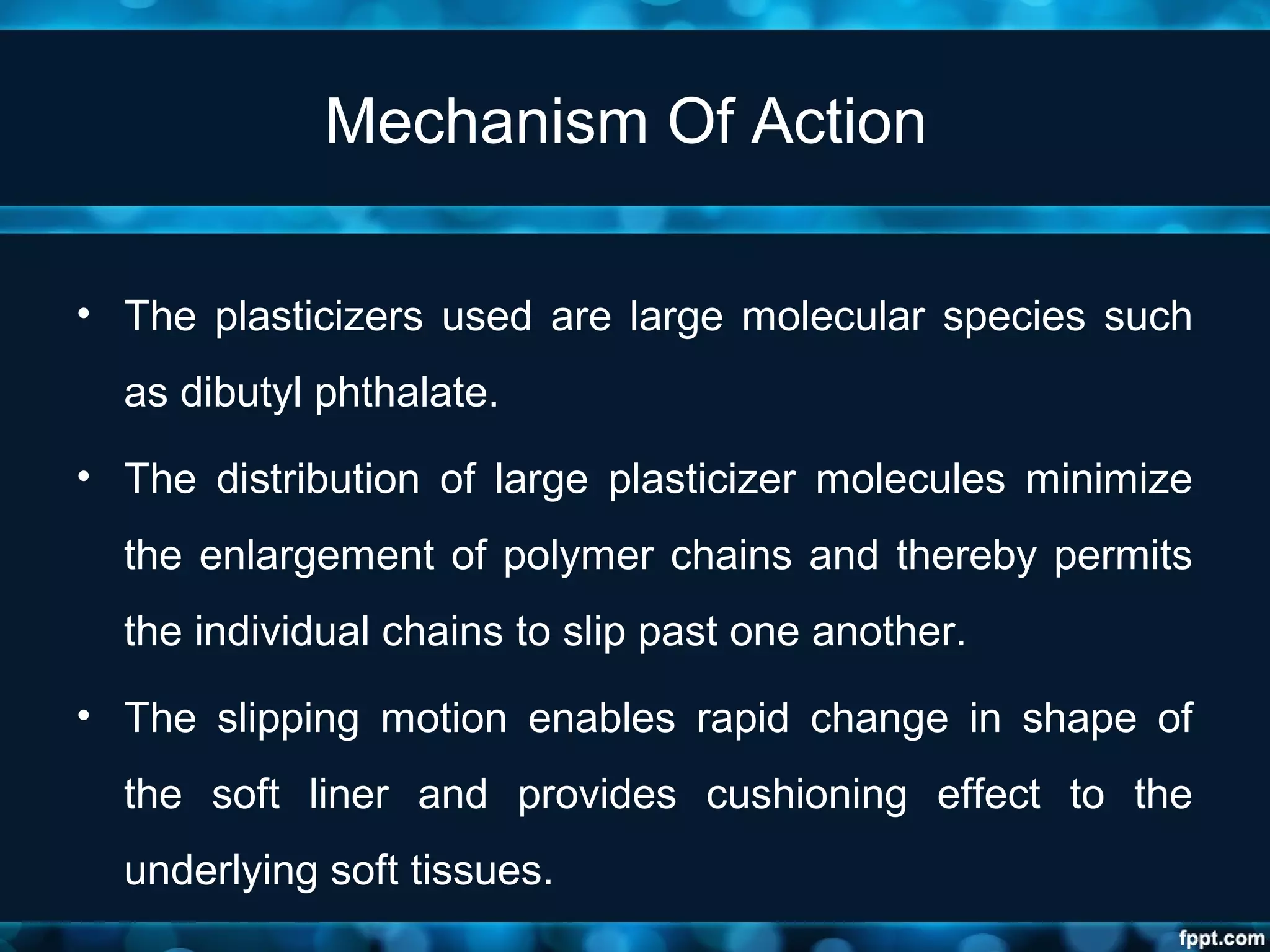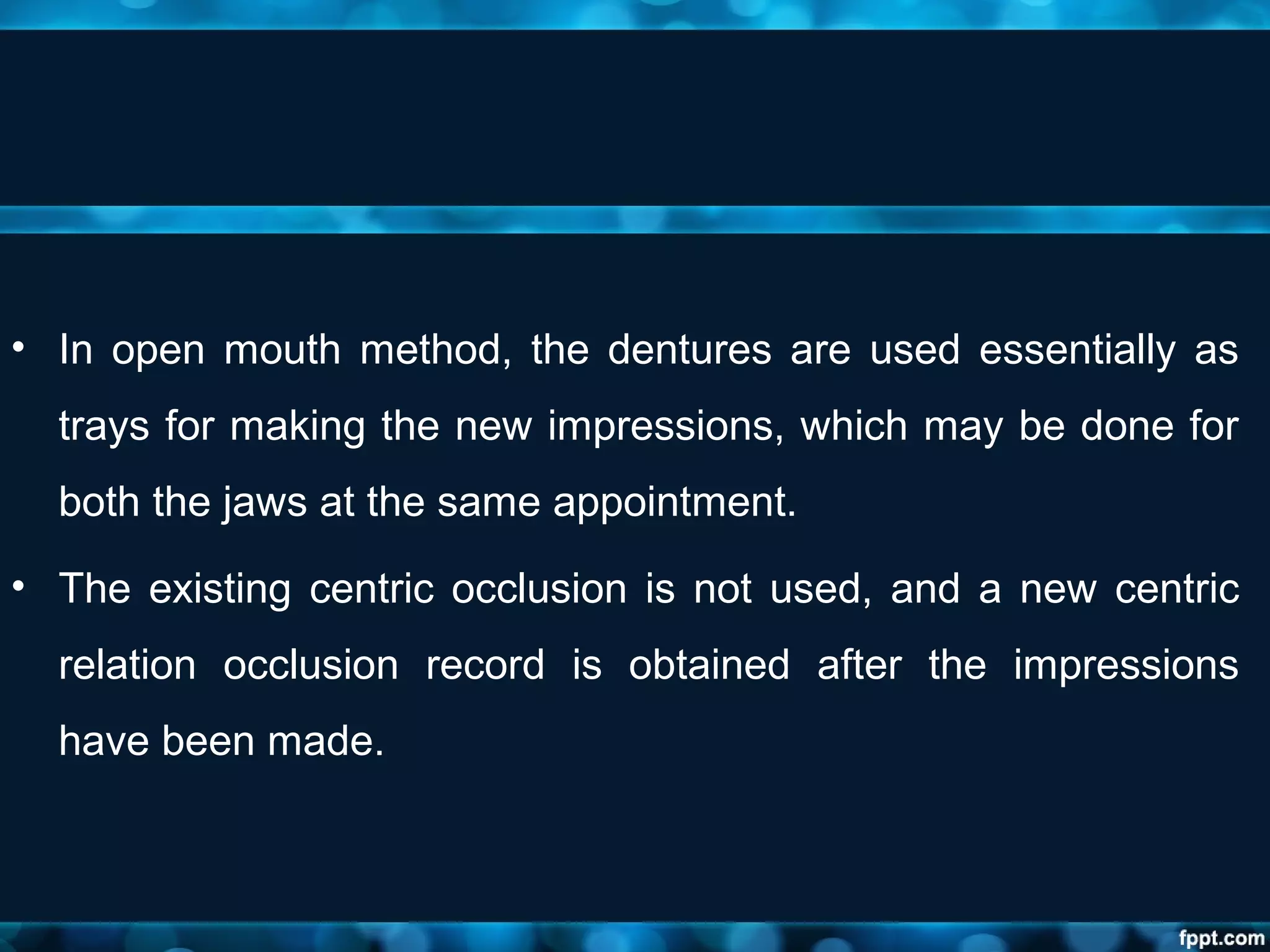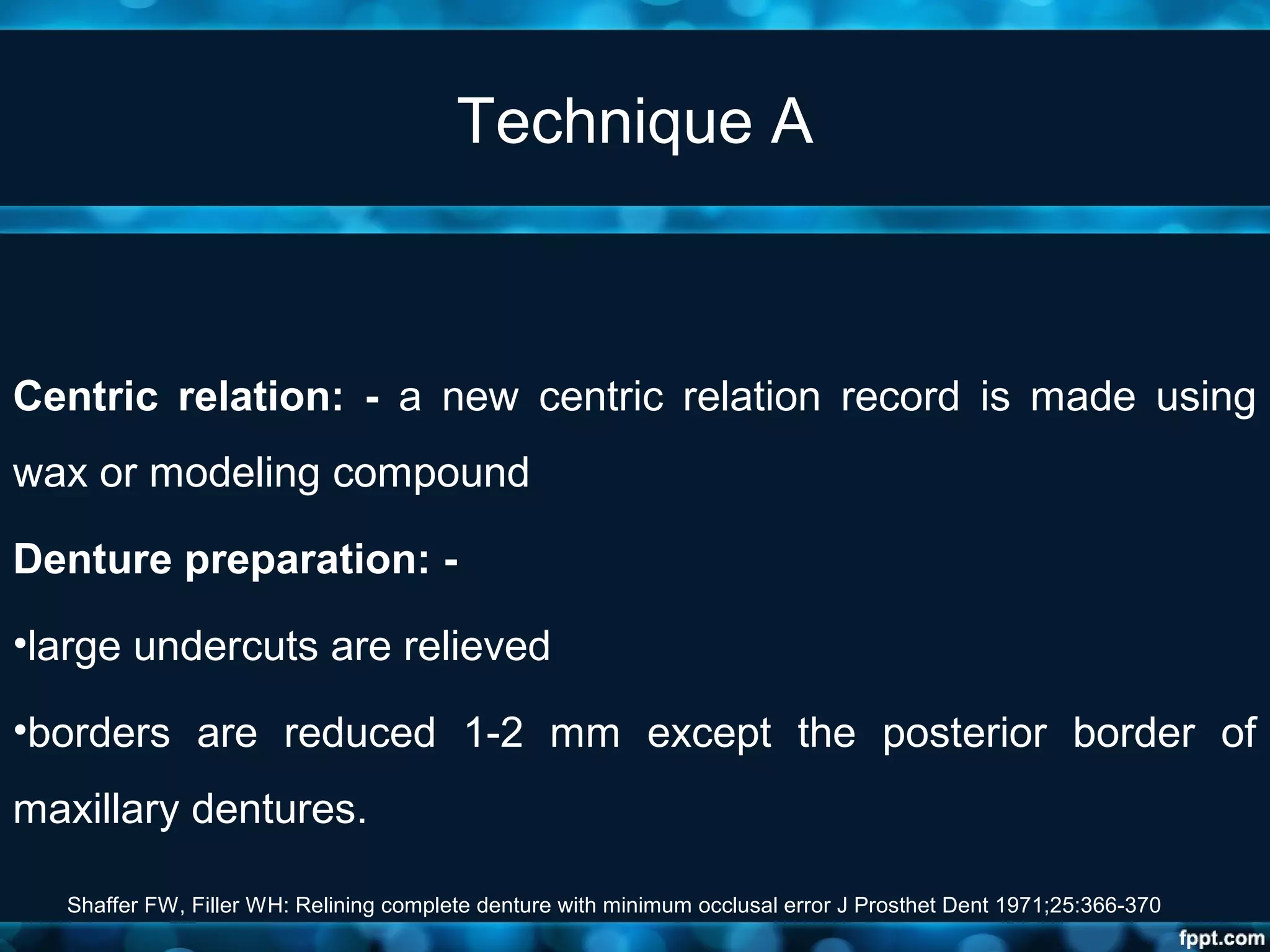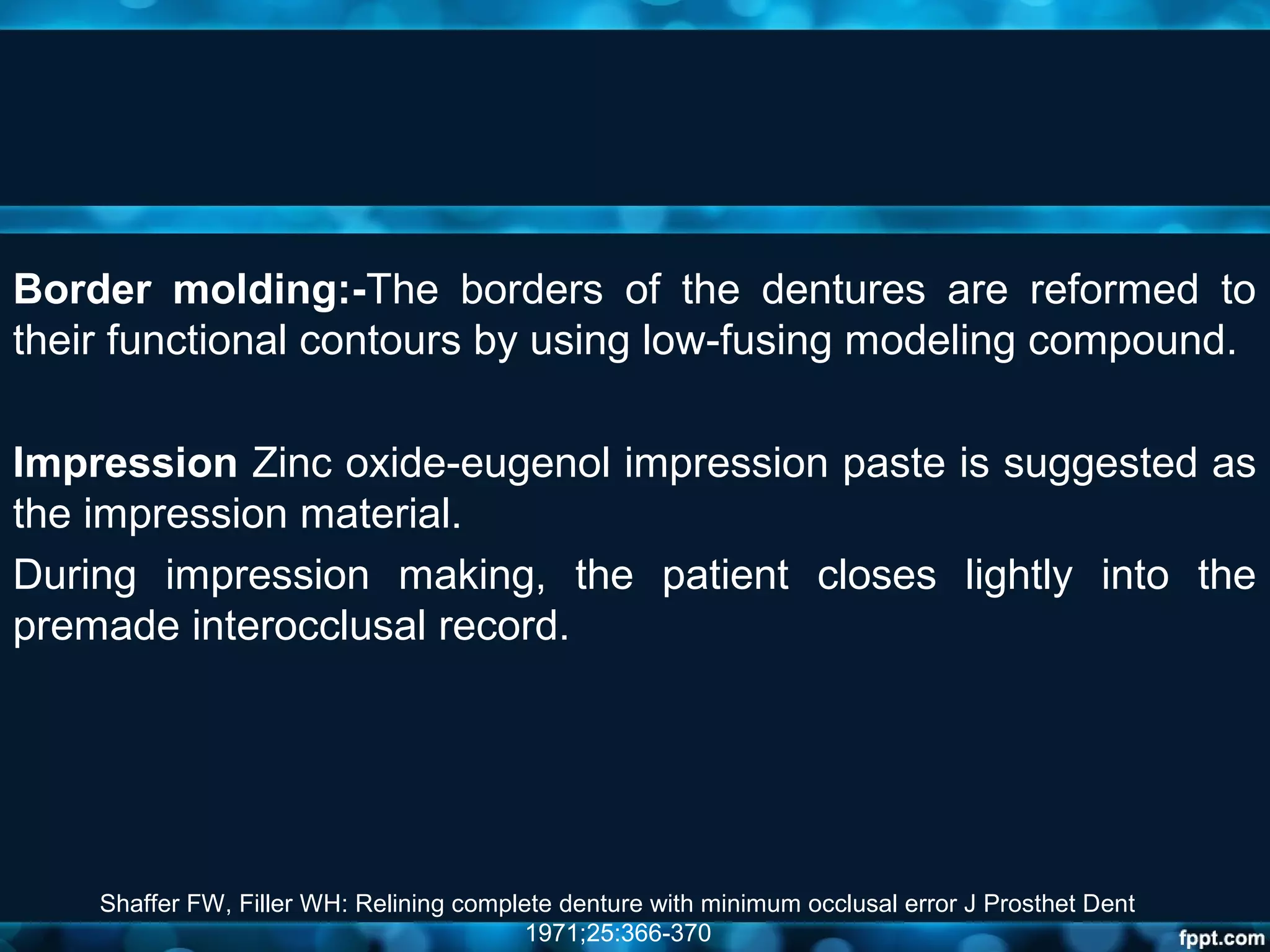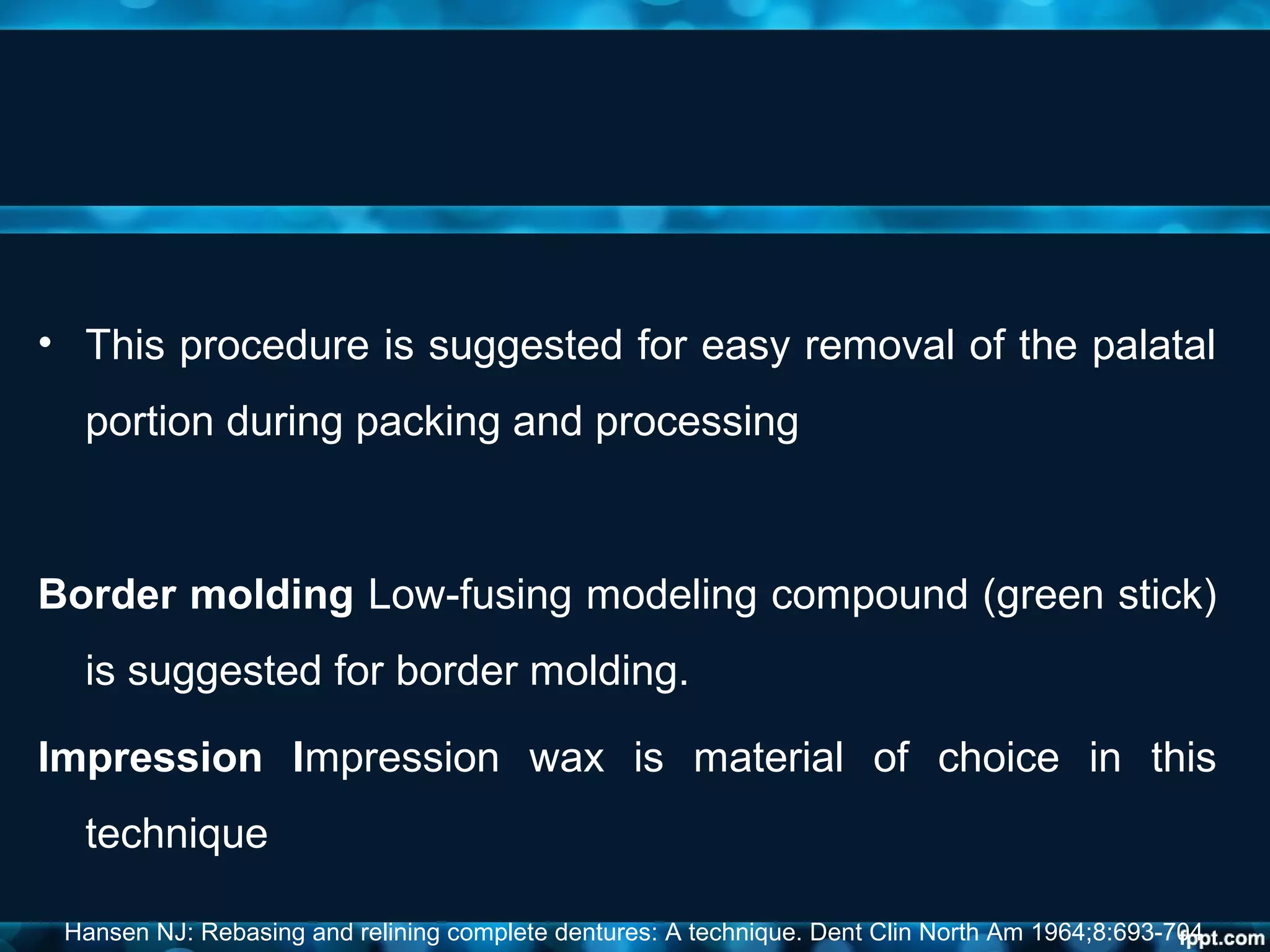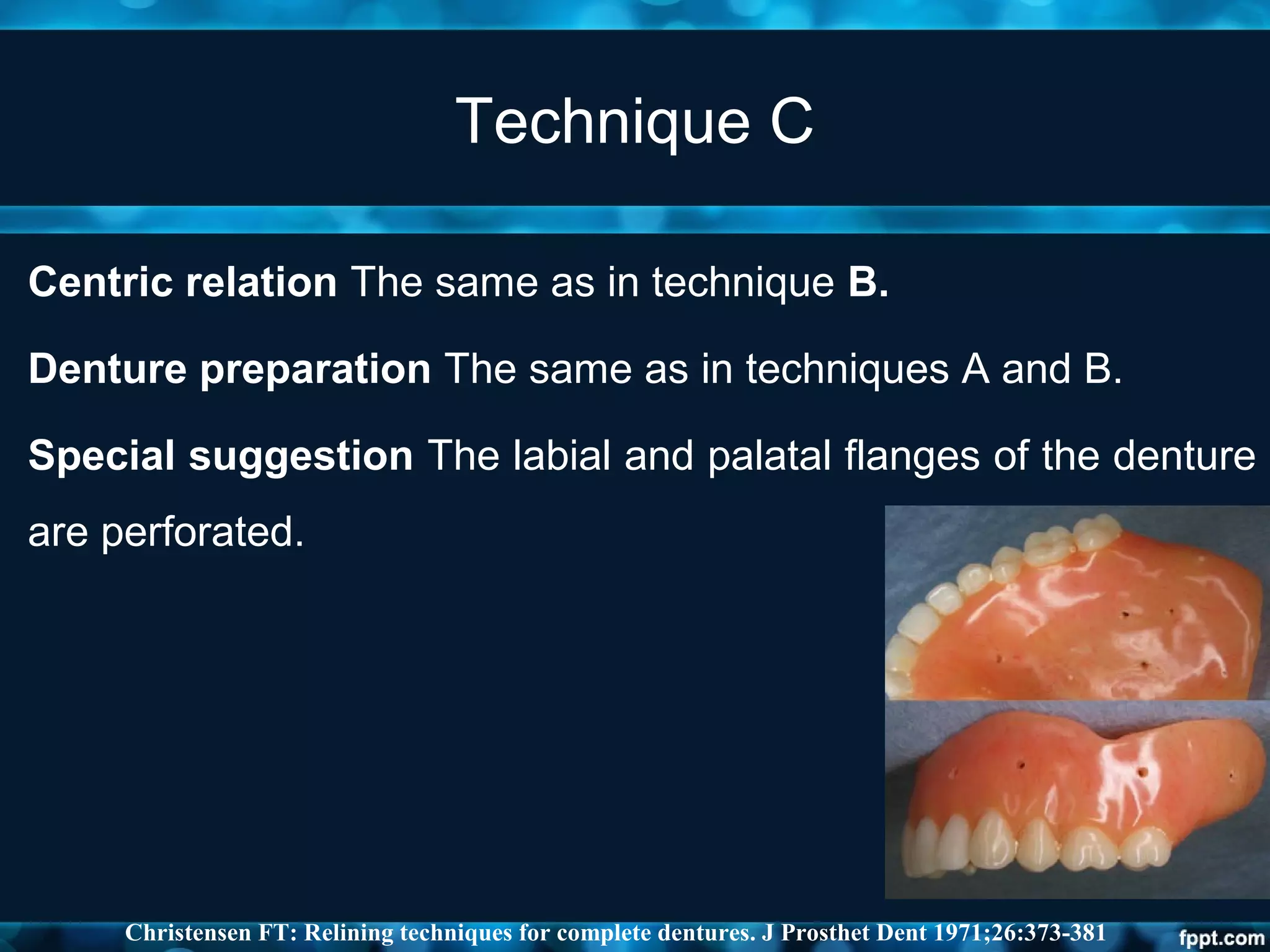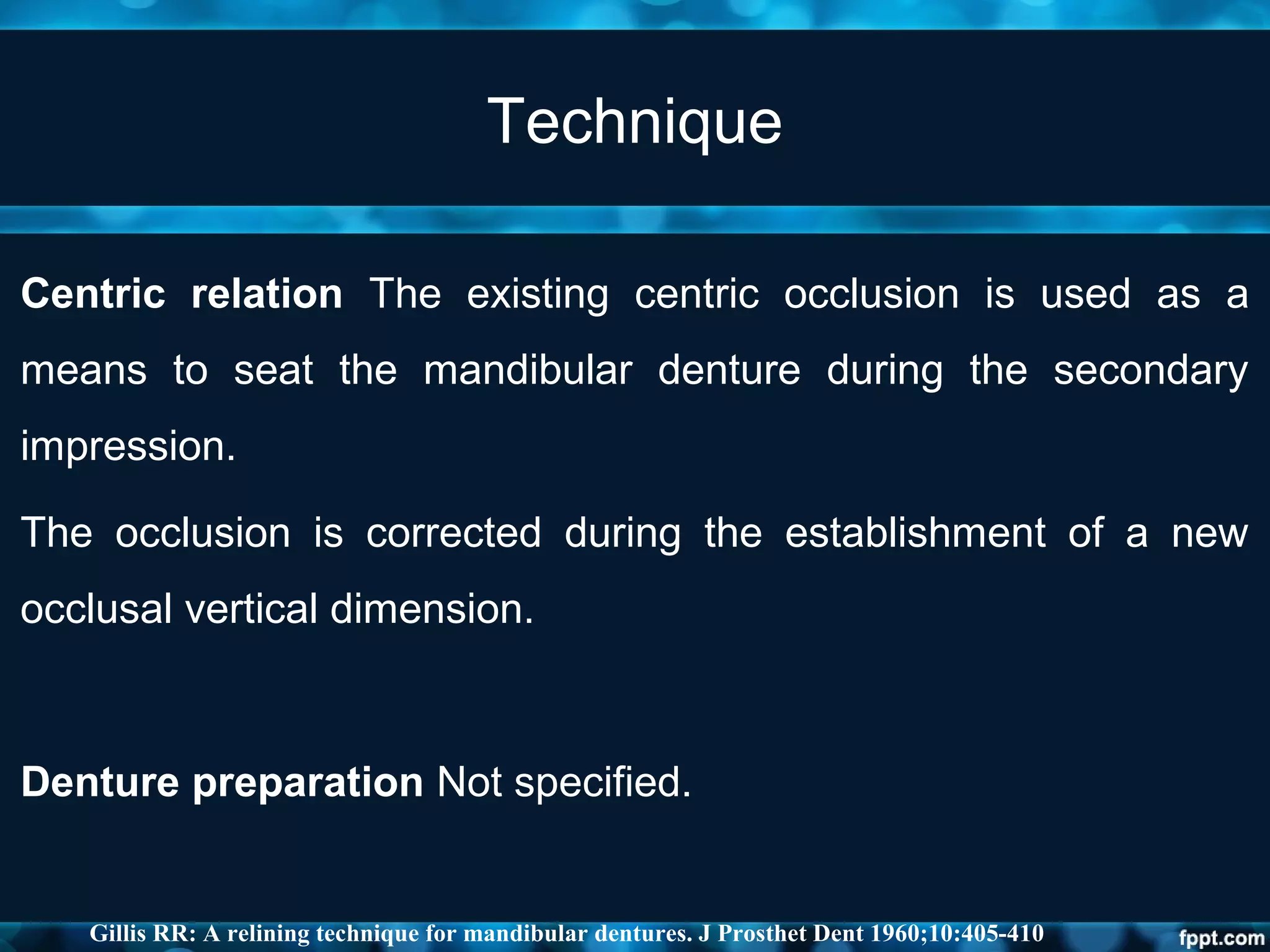This document discusses relining and rebasing procedures for complete dentures. It defines relining as adding material to the denture base to improve fit, while rebasing involves replacing the entire denture base. Relining is indicated when dentures lose adaptation due to ridge resorption. Closed mouth techniques take impressions with the teeth in occlusion, while open mouth techniques record a new bite relationship. Impression materials and lab procedures are also outlined. The goal of relining is to prolong the useful life of dentures by improving fit as the ridges change.


